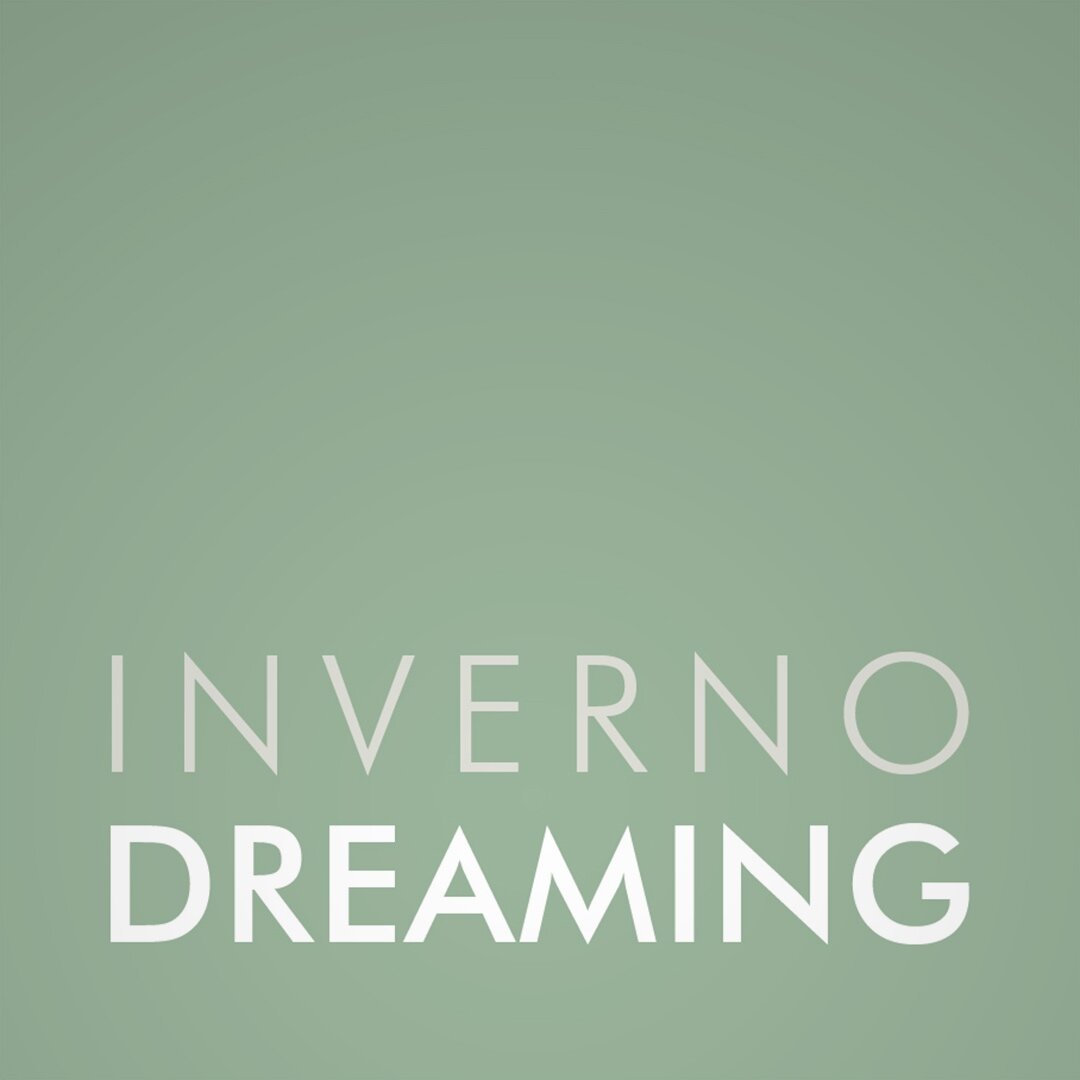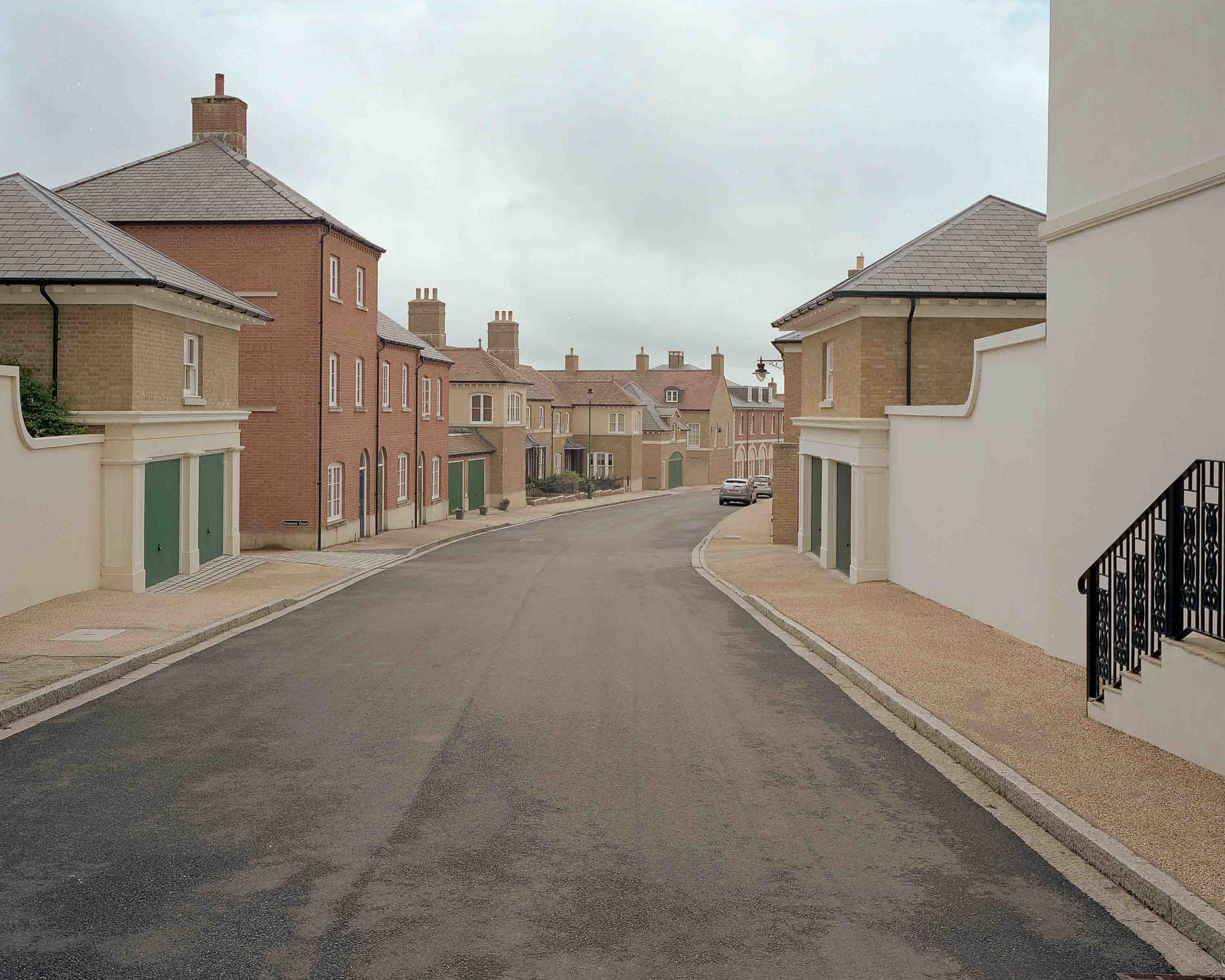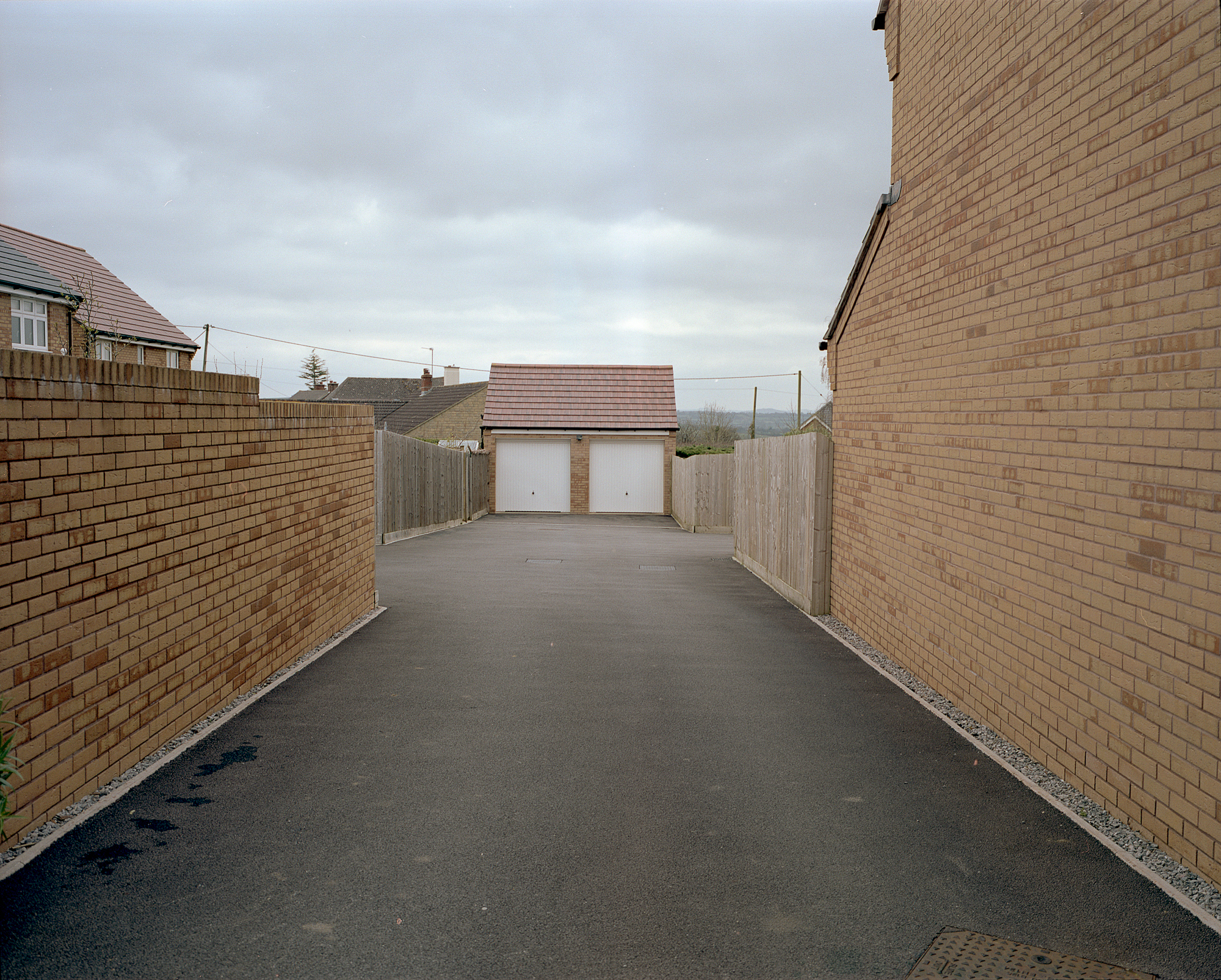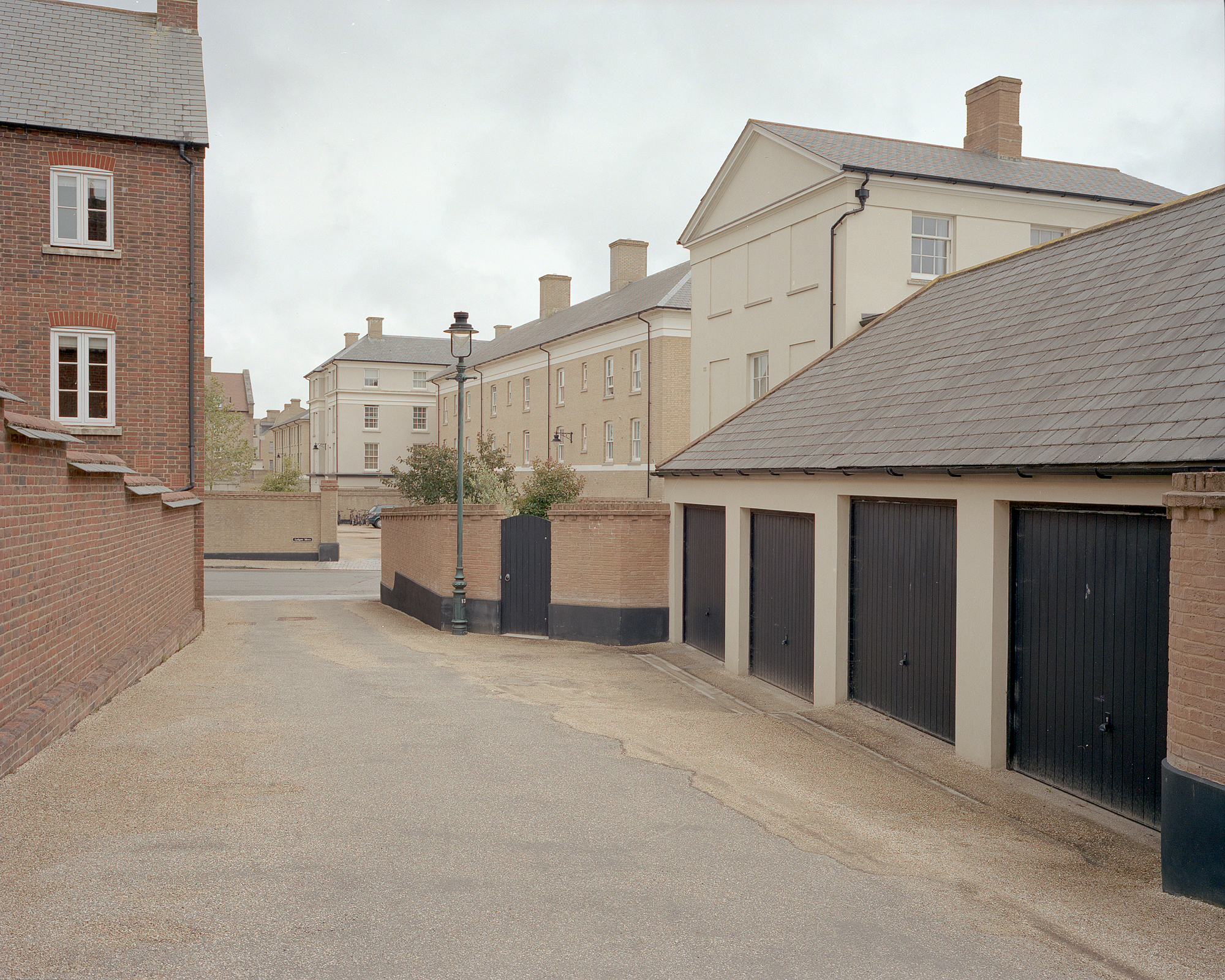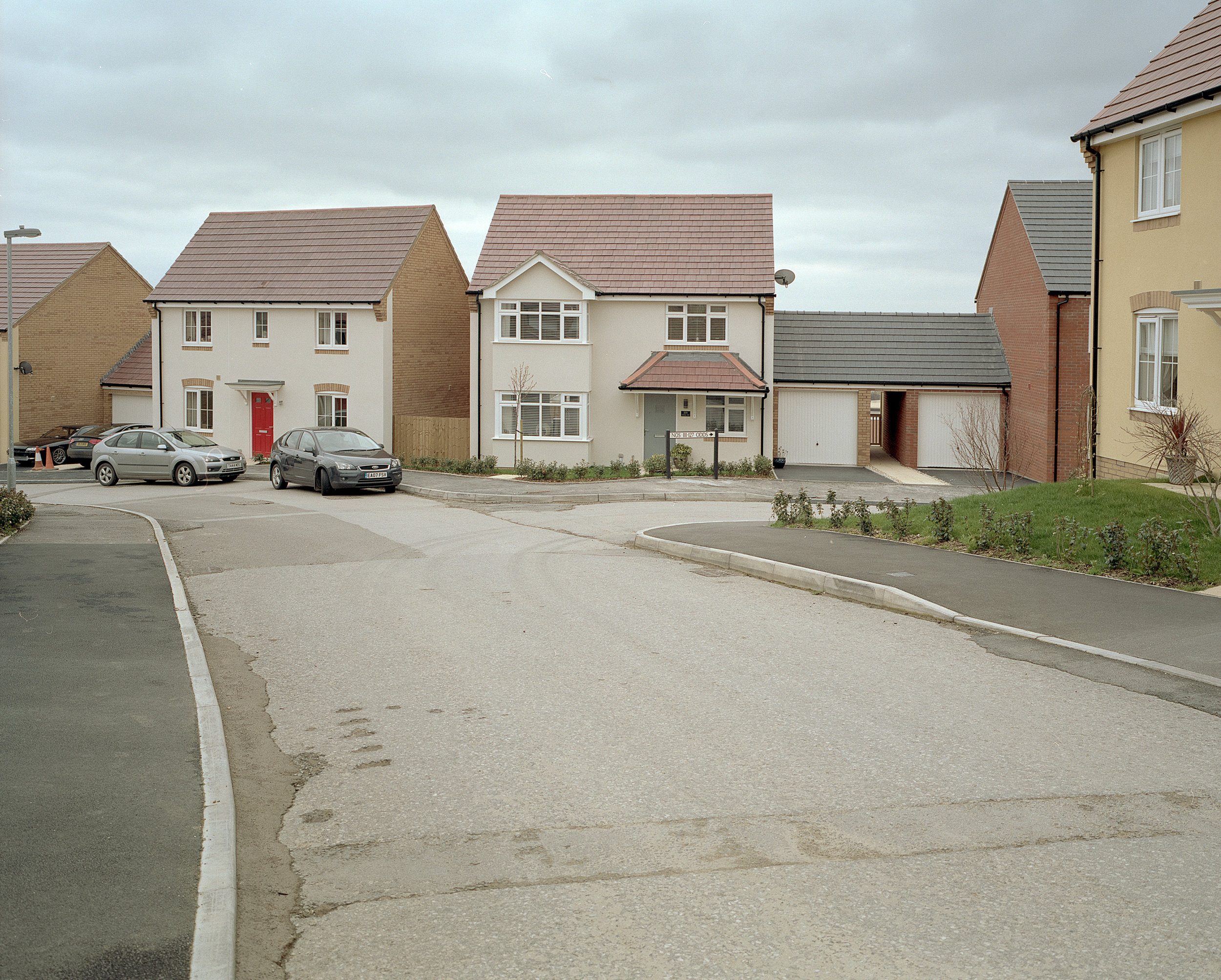An interview with Tom Westbury
I have been enjoying the photography of Southampton based photographer Tom Westbury for some years now. His work principally centres on urban and suburban vistas, comprising of compositions of the everyday and ordinary. Ordinary yet to my eyes quite compelling, his particular take on the tradition of the man altered landscapes is a balanced analysis of the space that together with his subtle use of colour and tonality creates a particular consistency; a sort of signature. I wanted to ask him some questions about the development of his photographic approach and to get a better understanding of his thinking and influences.
• Tom firstly a bit about you ?
I'm a 35 year old British photographer. I was born in Manchester but have spent most of my life in the South of England and now live in Hampshire. For a day job I work in a communications team for the National Health Service.
• What first sparked your interest in photography ?
I was never really into photography until about seven years ago. I started a new job which involved some photography; portraits, events, corporate stuff. I was given a DSLR and decided I'd learn how to use it in manual mode. I've always been quite technical minded and like to learn how things work. I quickly fell in love with photography from there, and within a few months I was hooked and it was my main creative outlet.
• How would you define your style?
The word 'straightforward' comes to mind. By which I mean just presenting things in an unadorned, unaffected way, and making the most of the camera's ability to capture realism, detail, and clarity.
• Tom your focus is very much on urban and suburban landscapes, often framed by buildings and structures, can you tell me a bit about your interest in this area and how it may have evolved from your photographic beginnings?
I used to do a lot of painting and drawing and my initial forays with photography were about using a camera to create 'instant paintings' of 'beautiful' subjects. After a while through reading and discovering about photographers and photography, I started to realise that photography has inherent qualities and it can be about more than recreating paintings and pictures with a camera. One thing that particularly interested me was how images of quite ordinary objects or scenes could take on a different quality when framed and separated from reality in a photographic print or image. In other words, worthwhile images could be made from traditionally overlooked subjects or scenes. Obviously, discovering the work of photographers like William Eggleston and Stephen Shore played a big part in this, and also the many contemporary photographers who are continuing this way of looking. Quite quickly it was possible to see meaning and value all around, in everyday places and spaces, and I started to focus more on these types of scenes, which tend to be in urban places or the borders where urban and rural intersect. I also have an interest in documenting the kinds of places we inhabit and what these places say about us and our society - so there is an aesthetic and a documentary angle in what I'm currently doing, which is what keeps it interesting for me.
• Your description of ‘the borders where urban and rural intersect’ is very intriguing, can you tell me more about these boundary areas and what in particular interests you about them?
Good question. I think it's because these areas are often unplanned and untidy - they reveal something different than carefully developed urban areas or purely natural landscapes - you get to see a break in the facade.
• I notice that you have an ongoing series of photographs that feature new build housing developments. What is the interest for you in this theme?
I find new housing developments in England to be fascinating. They tend towards a particular aesthetic which is a kind of pastiche of traditional styles, often eschewing modernity in a uniquely British way. I think these new estates tell us a lot about British aspirations and a sense of conservatism when it comes to residential architecture. This attitude is epitomised by the Prince of Wales, and reached a sort of pinnacle in his Poundbury development in Dorset which is the ultimate rejection of post-war ideals. I also feel quite strongly about the state of the property market in the UK, the relentless pressure to own property (despite this becoming more and more out of reach for many people) and I want to try and document this in some way.
• Can you tell me about your practical approach shooting, what attracts you to a scene or place and how you work a particular area?
It's still quite spontaneous. I try to have a camera with me at most times, and just keep an eye out for compositions or places that could work. More recently, I've started to plan out locations using Google Streetview or just by driving around. I have a real interest in Brutalist architecture so I'm also trying to visit some of the more iconic sites if I'm in the area.
• A lot of your photos feature large empty expanses in the foreground is this a conscious compositional tool on your part?
Yes and no. It's partly for technical reasons - I haven't used perspective-correction lenses, so to prevent converging verticals I keep the camera level, which tends to reveal more foreground. At the same time, there's often a lot of interesting details and textures in the foreground which can add value to an image, so I've learned to love empty and crumbling asphalt and pavements! I've recently picked up a shift lens though and I'm keen to start experimenting with this, but I'll still try and include foregrounds if I think they're needed in a composition.
• You seem to actively shoot in flat light, the sort of dull unexciting light that so many photographers deliberately avoid, are we all missing something?
Haha! Tom we live in the UK so we have to take what we can get! Seriously though, I actually think that this flat light has a lot to offer a scene. It tends to level everything out tonally, minimising shadows. Combined with a film like Portra, it results in a very neutral and deadpan feel which suits a lot of the subject matter and gives images an 'objective' quality. Having said all that, I'm a fan of magic hour as much as the next photographer - I just don't find myself out shooting as often at that time of day.
• You shot film, what is it about analogue photography that suits you and your work?
For me film has a great dynamic range and a colour-response that most closely resembles the image I have in my mind's eye. This means that most of the work is done in camera and in developing, and I don't have to think too hard when post processing. Medium/large format film can give extremely high definition images and is much more affordable than medium format digital sensors. I also develop and scan my own film (again, partially for financial reasons!), so there is a sense of being involved in more of the image making process. For the last couple of years, I've mainly used the Mamiya 7 camera, which is a medium format rangefinder camera. The camera has the perfect combination of image quality and portability, so it's really hard to justify using anything else, at least in terms of the way I work.
• Who are your photographic influences?
I struggle a bit with influences because I think we soak up so much subconsciously and I'm probably influenced as much by music or graphic design for example as I am by photographs. I also look at hundreds of images on social media everyday which must be effecting the way I see and shoot. So rather than influences I'll just mention some photographers whose work I just really love. William Eggleston, Fred Herzog, Stephen Shore, Joel Sternfeld, Robert Adams, Alec Soth, Gregory Crewdson, Walker Evans, Nadav Kander, Polly Tootal, Alexander Gronsky, Todd Hido to name a few. Cinema is a big one for me, too - especially the work of David Lynch, Wim Wenders, Stanley Kubrick, Terrence Malick and Sofia Coppola.
• You and your camera can go anywhere in the world, where would you go and why?
I think there's a lot to be said for staying close to home and working within a limited radius - really exploring deeply your immediate surroundings. But if I had to go somewhere else, I would like to get lost in small-town or suburban America - just because so many of my favourite images are steeped in this culture. I would also like to spend some time documenting a place where the pace of change is still rapid or accelerating - China is an obvious one, or India.
• What’s next for you?
I want to show my work to more people to get feedback and help to edit it into more coherent series, take a more planned approach to my practice to develop the themes I'm interested in and make more prints!
For me, Tom Westbury’s photography offers an absorbing view of the urban and suburban scenes that surround so many of us. Knowing a little more about his thinking certainly adds to their appeal. If you want to see more of Tom’s work you can follow his gallery tom_wesbury on Instagram, or visit his website www.tomwestbury.com
© All Rights Reserved | Tom Westbury 2017
